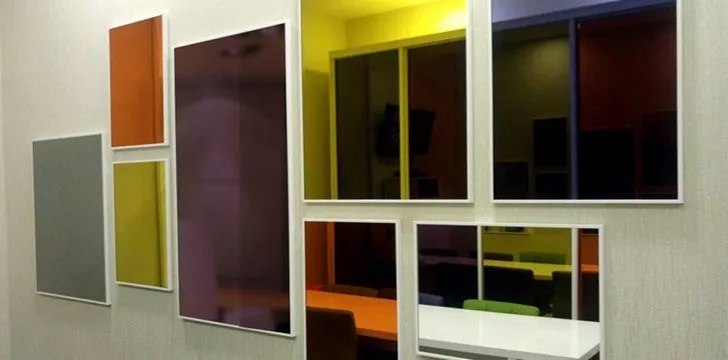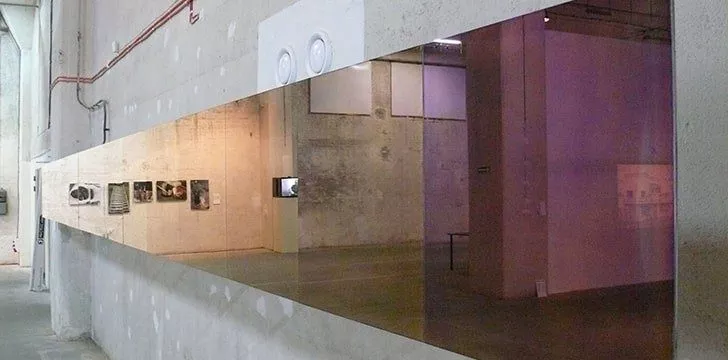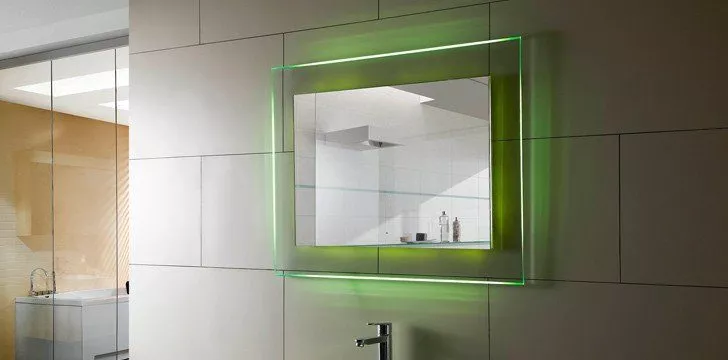The mirror, from your bathroom to the side of your car, they’re everywhere and do one very simple job; reflect.
Whether that’s reflection for pure vanity, to make sure you’ve gotten every bit of that sugary doughnut off your face, or to see that idiot racing up the side of you as you’re trying to change lanes on the highway, they’re a lifesaver and yet they’re so simple.
Today we’re going to answer a question that you’ve probably never considered but once you hear it you won’t stop until you’ve read this article…
What color is a mirror?

The mirror you have stuck to the front of that wardrobe is actually nothing more than a Soda-lime silica glass substrate with a silver backing.
To put it in layman’s terms, a silvery sheet of soda-lime glass.
This soda-lime mixture is actually what gives it its true color, which is actually a shade of green.
Your silvery wonder is green, a faint green I grant you, but green nonetheless.
How do we know this?

In Grenada, Spain way back in 2004, 2 researchers; Raymond L. Lee, Jr. and Javier Hernández-Andrés conducted an experiment in one of the Science Museums most popular attractions; the mirror tunnels.
The mirror tunnels is a contraption that’s contains 2 mirrors facing each other with 2 eye holes cut out for the intrigued visitor to peer into.
The researchers found that when the reflection of the mirrors are bounced back and forth over 50 times, the green wavelength becomes the predominant wavelength we can see.
In turn we can start to see the greenish truth beneath and for all us science nerds the green wavelength is 552-nanometers or more vaguely anywhere between 495 and 570 nanometers.
Why do we see the mirror as purely reflective of what surrounds it?

“I’m sure I’ve heard a mirror is actually white?” Well this is where the fun bit comes in, the science behind the reflections is that white does indeed make some sense as white does reflect all light, and in turn black absorbs all light.
However, when it comes to white you’re obviously wondering why that mug on your desk or the shirt on your back doesn’t reflect the tapestry of colors around you?
Simple, white reflects all colors in all different directions, in a process known as a Diffuse Reflection, whereas mirrors reflect colors straight back in the direction its facing as a concentrated source, which is known as a Specular Reflection.
This allows us to see the object as it is before the reflection.
For example, if you hold up a blue square with a letter “B” on it in front of a white background it won’t reflect anything visible. But if you hold that very same blue square in front of a mirror you’ll see nothing less than the exact square with the letter “B” in reverse being reflected back.
In Conclusion
So there we have it, a question you didn’t even know you wanted to ask has finally been answered, all those long drawn minutes being unable to concentrate are finally banished.
The humble mirror is nothing more than a greenish block of soda-lime with a shiny back.
One thing is true though, I really want to go to Grenada and see this mirror tunnel for myself…

















